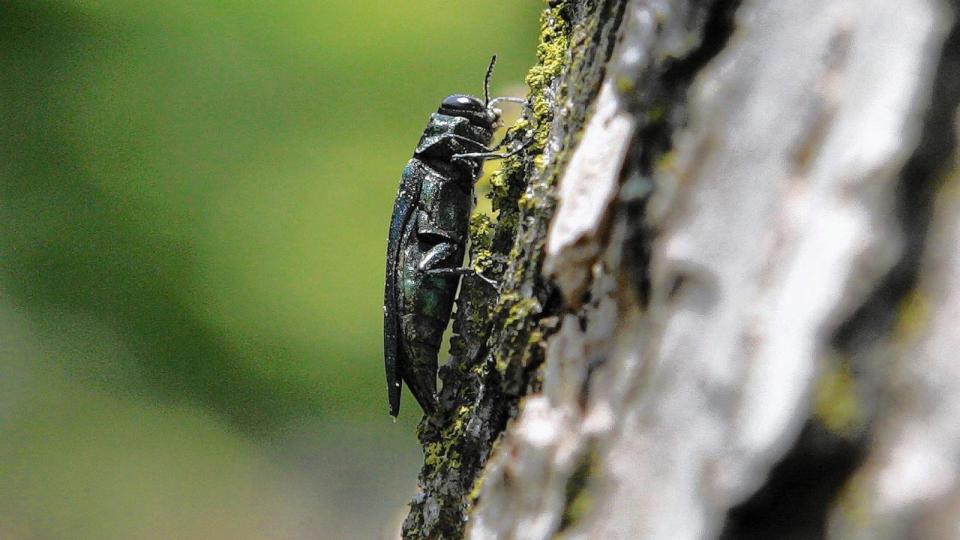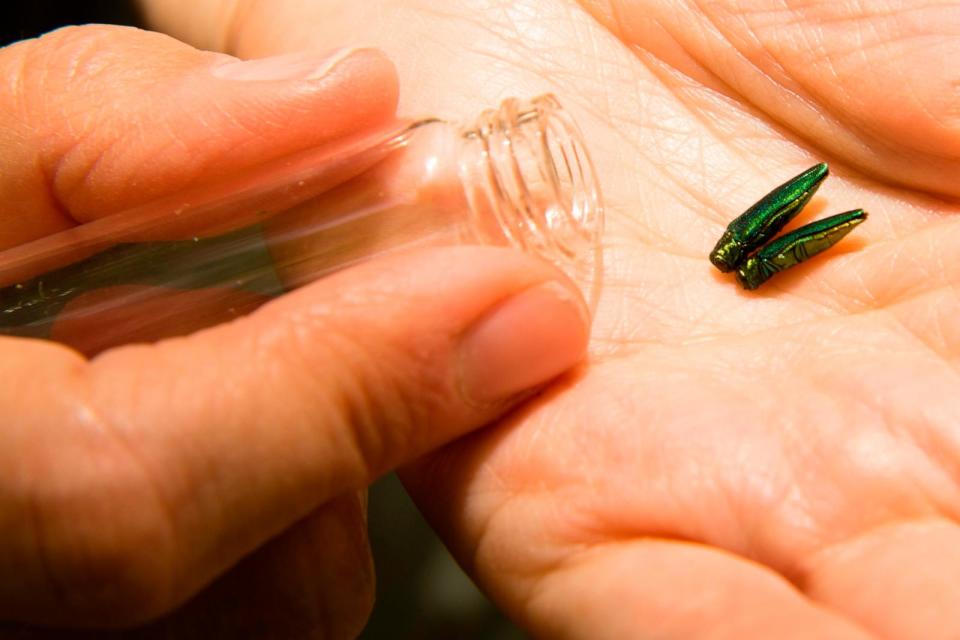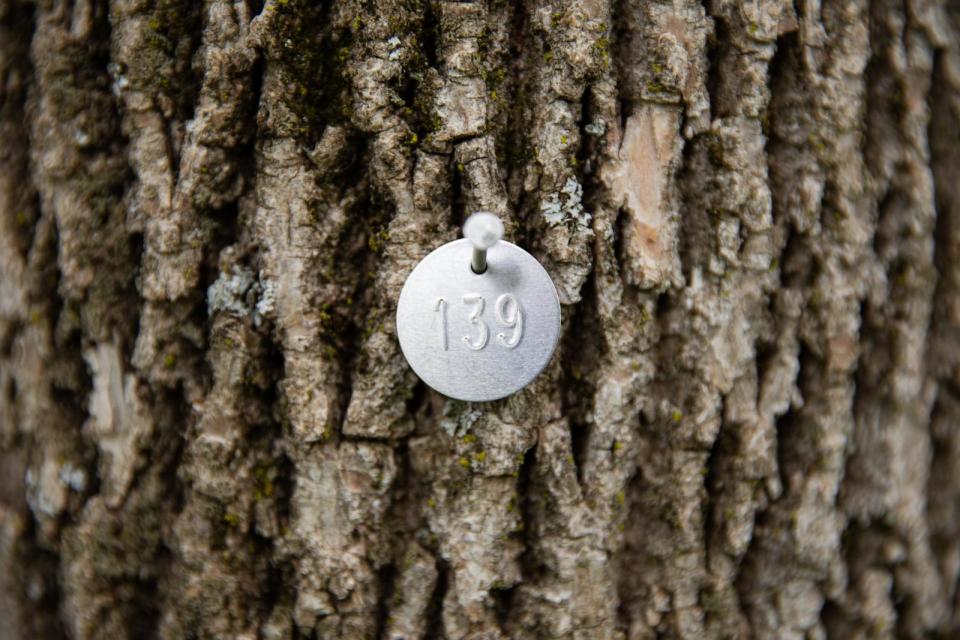Invasive emerald ash borer endangers cultural keystone tree species
In northern Wisconsin, April Stone is carrying on a centuries-old Ojibwe practice of basket making. She uses wood from the black ash tree, a cultural keystone species that's now under threat from the invasive emerald ash borer.
Yet for Stone and other tribal artisans, protecting black ash trees – and their cultural and ecological value – is critical. Basket making, she said, empowers and connects people.
“This kind of work teaches humility and patience and respect and courage and love and wisdom, all of those sacred lessons that helped our people continue on in their existence for thousands and thousands of years,” Stone said.
The emerald ash borer has proliferated across 36 states, the District of Columbia and five Canadian provinces, according to the U.S. Forest Service. The green, wood-boring beetle – native to Asia and which was first discovered in the U.S. in 2002 – is considered one of the most destructive invasive species in North America, killing trees within three to five years of infestation, the federal agency reports.

Experts say that while adult beetles cause minor damage, their larvae are killing black ash trees by feeding on the inner bark, which disrupts the flow of water and nutrients the tree needs to live.
MORE: Can Trickery Save the Country's Ash Trees?
Many Ojibwe basket makers and harvesters pound logs from trees to produce materials that are used in a variety of woodworking projects, like making lacrosse sticks and snowshoe frames. By a recent estimate, 98% of Indigenous people in areas where black ash grows will experience the loss of more than 75% of their tree population by 2035. In the U.S., black ash trees grow primarily from Maine to Wisconsin, in a band that wraps to the south of the Great Lakes.
The decline of black ash trees is also a concern to Tyler Everett, a citizen member of the Mi'kmaq Nation in northern Maine. Everett is the tribal forest adaptation technical assistant with United South & Eastern Tribes, a nonprofit serving 33 federally recognized tribal nations.
Everett said basket makers alerted regional leaders to the emerald ash borer's devastating impact on black ash trees. That inter-tribal communication, he added, moved the needle on awareness.
“The knowledge that basket makers and ash harvesters have about this tree needs to be passed on, and we have to have new basket makers and ash harvesters learning this cultural practice. It’s hard to see that happen when the trees are not surviving,” Everett said.
A further challenge: black ash is a species that's vulnerable to climate change, according to a 2023 report from the Great Lakes Indian Fish & Wildlife Commission (GLIFWC). The U.S. Forest Service told ABC News in an email that black ash trees are typically managed during the winter, "so people and equipment can enter the stands on top of snow, which avoids damaging the fragile lowland soils where black ash grow."
MORE: How kelp farms, an 'environmental powerhouse,' can help mitigate climate change
However, climate change is causing warmer winters, which in turn has "reduced the snowpack, limiting opportunities to safely manage these stands," the U.S. Forest Service said, making it more difficult to slow the spread of emerald ash borer.
Chris Swanston, the director of the Forest Service Office of Sustainability and Climate, said the agency is “undergoing a genuine paradigm shift” in its land management and adaptation approaches because of climate change.

“The snow is not there like it used to be,” Swanston said.
He said it’s estimated that black ash trees face about a 95% mortality rate in the next 25 years because of the emerald ash borer, which has killed millions of ash trees in recent years.
“The reason that people are worried about emerald ash borer is because it seems like an almost unstoppable force,” Swanston said.
The effects of infestation can go undetected for two years, hindering forest managers from quickly identifying and eradicating it. The invasive pest has infiltrated nearly 60 percent of the native range of black ash, a recent study found.
In addition to their cultural importance, black ash is a wetland species that regulates water levels, and their loss reduces biodiversity.
“You definitely throw off the interrelationships of different wildlife species, in addition to essentially losing a forested landscape,” Swanston said of the impacts of fewer black ash trees.
Despite logistical hurdles, there are some promising strategies underway to preserve and repopulate black ash trees. Many tribal members and foresters are collecting ash seeds in hopes of harvesting them both for future research and rematriation efforts, the latter referring to reuniting them with tribal nations. Others like Everett, who are part of the Ash Protection Collaboration Across Wabanakik (APCAW) group, are researching varieties of black ash that are genetically more resistant to the emerald ash borer.
MORE: Fruit fly found in Asia forces partial quarantine of Los Angeles County: CDFA
Swanston said the U.S. Forest Service is strongly engaged with tribal nations across the country, working together to learn from their experience. Still other mitigation efforts include introducing non-native predators of the emerald ash borer, such as stingless wasps.

“It's kind of a race for time,” Swanston said. “Can the wasps push back the emerald ash borer before the emerald ash borer wipes out so much ash that there's no coming back?”
Back in Wisconsin, on the Bad River reservation, April Stone said in Ojibwe oral history, humans are the fourth order of creation, and everything in the natural world – like birds, the sky, and trees – comes before them. She said even with the emerald ash borer's destructive presence, there is a bigger question to consider: the human impact on the landscape.
Still, she finds reason for optimism close to home.
“I can feel pretty good about the future of the ash trees when I’m walking around and I see all the little saplings coming up. I feel hopeful when I see that,” Stone said.
Invasive emerald ash borer endangers cultural keystone tree species originally appeared on abcnews.go.com

